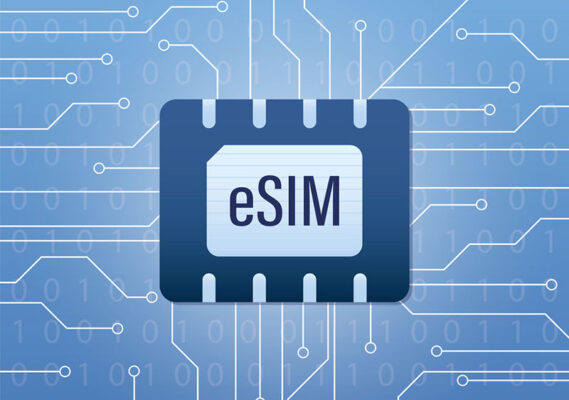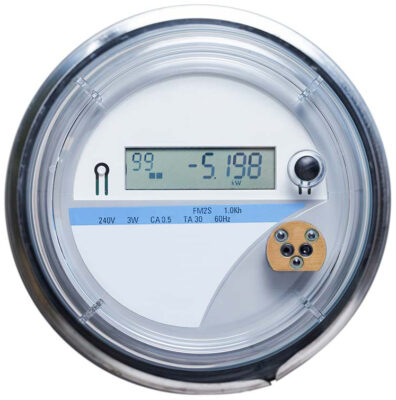The Benefits of eSIM and iSIM Technologies for Smart Meters
By Neil Bosworth
July 9, 2024
By Neil Bosworth
July 9, 2024
Estimated reading time: 3 minutes
How is embedded SIM (eSIM) technology changing the smart metering market dynamics for electric, gas and water? Where are we with eSIMs currently, and what are the expectations?
We must first understand the difference between eSIM and embedded Universal Integrated Circuit Card (eUICC) to answer these questions. The terms can be confused, as eSIM is often used to describe eUICC.

The eSIM is also known as a solderable machine-to-machine form factor (MFF2) SIM or a SIM that allows dynamic provisioning and management, often over the air (OTA). The latter describes eUICC, which is the software component of an eSIM.
The eSIM marks a significant leap forward for the metering industry, especially for smart metering. Smart meters operate in a high-volume industrial electronics market with stringent cost constraints. Smart meter manufacturers also face the challenge of ensuring long-lasting reliability and robust security measures.
While smart meters are widespread, not all designs harness the full potential of remote provisioning, which is the primary eSIM use case. eSIMs present meter manufacturers and solution providers with new opportunities across various aspects.


The traditional process of ordering, handling and installing plastic SIMs is costly and prone to errors. Multiple profiles are required from different operators. Meter manufacturers must manage deliveries from various sources, including network operators and customer supply. eSIM technology can alleviate this logistical burden.

One of the most immediate advantages lies in manufacturing processes. Loading a profile at the end of the manufacturing line offers significant cost savings for meter manufacturers. The GSMA addresses this through initiatives like SGP4.x, which focuses on in-factory provisioning.
While use cases are assessed, a standardized approach is yet to be established. Smart meter manufacturers are exploring non-standardized or semi-proprietary approaches or working within GSMA standards such as SGP.32.

Meter service providers employ varying approaches to installation. In the past, network services with roaming or network surveys before installation mitigated low network coverage issues. However, eSIM technology enables smart meters to scan networks and download the most suitable mobile network operator (MNO) profile. This reduces installation time and eliminates extensive network surveys.

Smart meters last 10 to 15 years and may need updates as technology changes during that time. Factors that impact cell tower coverage include operator mergers, base station refarming and urban development. These can disrupt service agreements or fail to meet service level agreements (SLAs). Remote subscription management enables seamless operator switching, ensuring continuity and competitive options for superior services.

The eUICC standard can support security applications and provides eSIMs with security features, such as switching MNOs in the event of a wider issue. eUICC’s flexibility enables the MFF2 form factor SIMs. These SIMs are soldered to the host printed circuit board, eliminating physical removal for enhanced security.
Furthermore, eSIMs enable the utilization of secure containers, allowing applications to leverage enhanced security measures. GSMA’s IoT SAFE standard is an example of a commercialized solution leveraging this feature.

Unlike traditional SIM cards, the MFF2 form factor used in eSIM technology does not require connectors. Soldering the SIM to the PCB improves reliability. Although meters may require maintenance and refurbishment over time, eSIM technology enables removable SIM card and fixed form factor benefits.
It is crucial to consider eSIM technology’s limitations in the context of gas and water meters that rely on batteries with a 10-year lifespan. Moreover, the frequency bands MNOs utilize in cellular communication deployments can vary. This affects the ability to penetrate walls, leading to unexpected behavior during a meter’s active lifetime.
OTA profile provisioning and choice of MNO may impact battery performance and require careful consideration. In-factory provisioning for water and gas smart meters remains valid, underscoring the need for standardized approaches and robust partnerships.

Integrated SIM (iSIM) technology’s impact on equipment makers is immense. It promises cost reduction across various aspects, including logistics and manufacturing. In addition, iSIM lowers the bill of materials (BOM) cost, providing a significant advantage in the competitive landscape.
iSIM technology integrates the secure element functionality into a trusted zone within the silicon of the baseband chipset. However, iSIM standardization is still a work in progress. iSIM offerings are tailored as mono-profiles, specifically designed to meet individual customers’ unique requirements.
Moving forward, metering companies must adopt subscription management standards defined by initiatives like GSMA’s. In theory, iSIM should operate similarly to eSIM but with additional alternative opportunities. A standards-based approach is essential for metering manufacturers to perform effective in-factory provisioning.
Module manufacturers can build products with an empty embedded iSIM. Then, like SIM manufacturers, they can provide customization services by loading profiles to specific module batches during manufacturing. This approach can alleviate manufacturing burdens for metering companies.
Establishing trustworthy partnerships with module providers becomes paramount. Smart meters serve as critical infrastructure. The SIM profile embedded within the module defines the service and security of the smart meter ecosystem.
iSIM use will increase in the next two years, becoming a viable alternative to eSIM technology. This progress improves smart metering technology’s evolution, offering enhanced capabilities and opportunities for the industry.
Editor’s Note: This blog was originally published on 10 January 2019 and has since been updated.